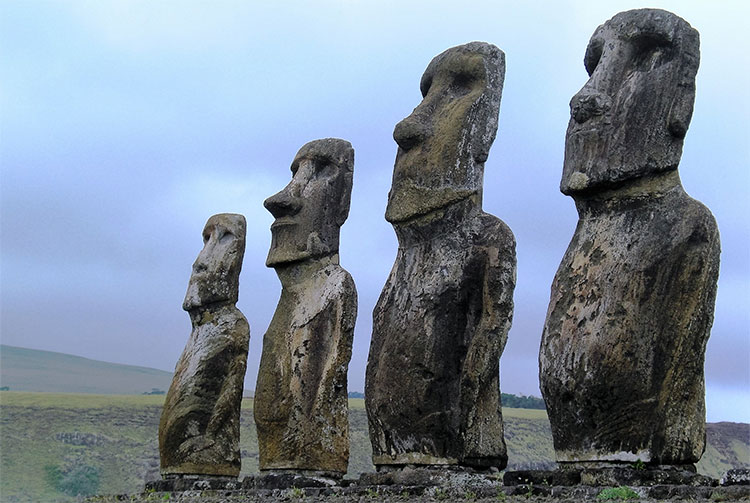Scientists reveal new discoveries about Easter Island
In a recent discovery, a group of US houses said they had found a new secret about the life of the ancient people on the famous Easter Island in Chile.
The secret to being a headache is how ancient communities can live on an isolated island with enough fresh water to live. In particular, the problem that was given by a study in the eighteenth century was that people on the island drank . sea water because there were no large rivers or lakes on the island to store fresh water.

New discoveries by US scientists continue to uncover more about the life of the ancient Rapa Nui to further explore the mysterious disappearance of islanders.
After a long time searching for mysteries that have not been answered on Easter Island, a group of American archaeologists found the secret to allow Easter Island residents, ancient Rapa Nui people, to collect water. drink .
The secret lies in the fact that when it rains, rainwater is quickly absorbed by porous volcanic soil and then flows in with other groundwater flowing towards the island's coast. And especially when mixed in seawater, the water in this area makes it so salty that it can be drunk.
Now, after his discovery, archaeologists from the United States are planning to explore the places where groundwater flows related to Moai - monolithic statues created by people. Ancient Rapa Nui.
Easter Island - recognized as a World Heritage Site by UNESCO, is located off the southeast Pacific Ocean. This is a very famous island under the sovereignty of Chile.
Easter Island is famous for nearly 900 giant stone statues of human faces (called Moai). The Moai are created by ancient Rapa Nui people. Especially the Rapa Nui community lives on the island separate from the world for thousands of years on this island. However, in the 1860s, everyone on the island suddenly disappeared mysteriously. So far this island has become more popular. However, there are many secrets that have not been clarified yet, making researchers take time.
- The origin and meaning of Easter
- The mysterious story of ethnicity suddenly disappeared 160 years ago
- Mysterious bacteria on Easter Island
- How did Easter Island decline?
- Revealing the mystery of the statue on Easter Island
- The 15 most isolated cities on Earth
- The most exotic islands in the world
- The Easter Island compound extends the life of the mouse
- Discover concussion about the body under the statue of Easter Island
- Aliens have appeared on Easter Island?
- What do countries eat on Easter?
- Reveal the mystery of traces on the
 Discovered an ancient centipede fossil 99 million years old
Discovered an ancient centipede fossil 99 million years old Discovered bat-like dinosaurs in China
Discovered bat-like dinosaurs in China Discovered a 200-year-old bronze cannon of the coast
Discovered a 200-year-old bronze cannon of the coast Discover 305 million-year-old spider fossils
Discover 305 million-year-old spider fossils